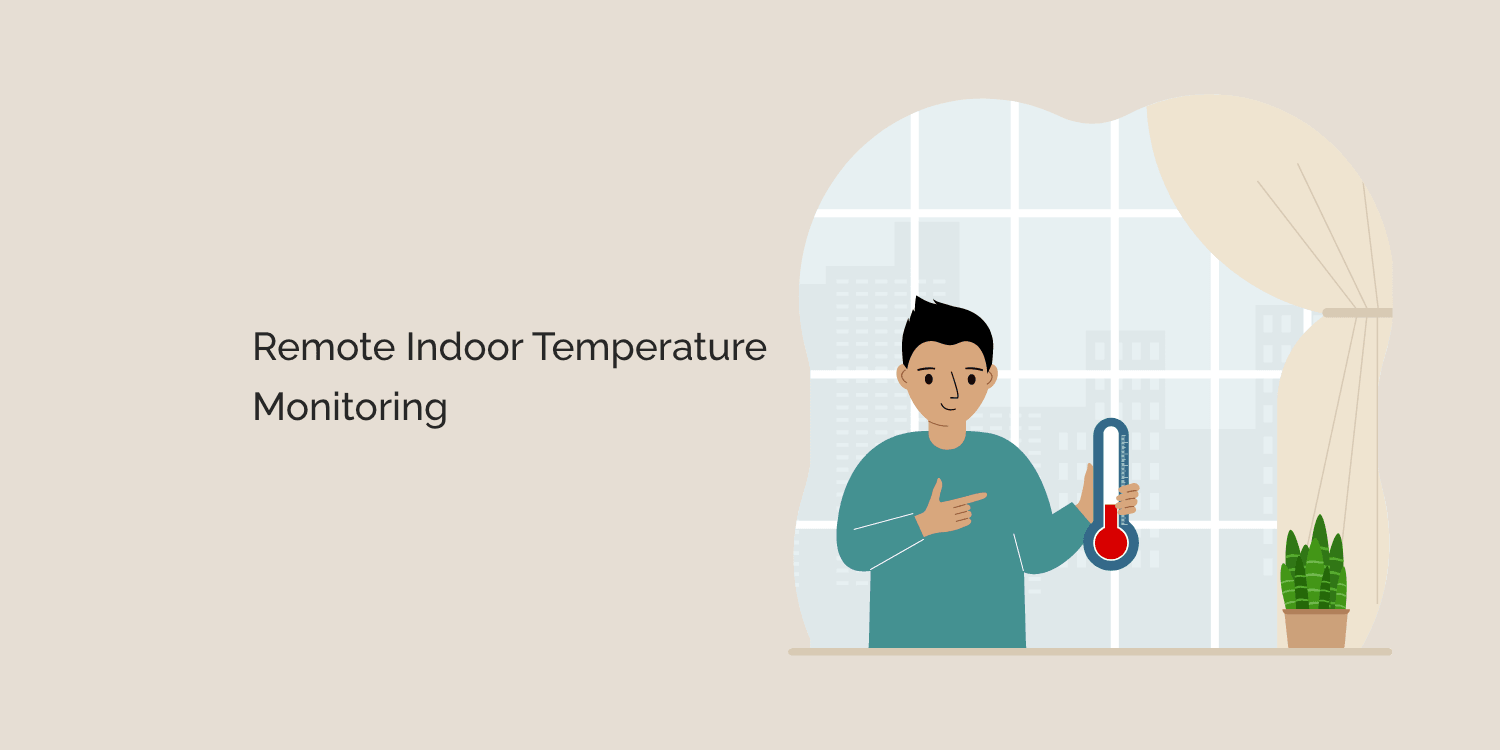Introduction
Maintaining a comfortable temperature in your home is essential to your well-being. It can affect your health, sleep, and productivity. It's crucial to monitor indoor temperature to ensure that it stays within the optimal range. Remote indoor temperature monitoring is becoming more popular, and for a good reason. With the help of technology, you can monitor your home's temperature from anywhere in the world. In this article, we will dive into the details of remote indoor temperature monitoring, including its benefits, how it works, and what types of sensors are available.
What is remote indoor temperature monitoring?
Remote indoor temperature monitoring is the process of measuring the temperature in your home or building from a remote location. This can be done through a variety of sensors that are placed throughout the space. These sensors can be connected to a wireless network, allowing you to access the data from your computer, tablet, or smartphone.
Benefits of remote indoor temperature monitoring
-
Improved comfort: With remote temperature monitoring, you can make sure that your home is always at the right temperature. You can adjust the thermostat or HVAC system remotely to ensure that your home is comfortable when you arrive.
-
Energy efficiency: Remote temperature monitoring can help you save money on your energy bills. By monitoring the temperature in your home, you can adjust your thermostat or HVAC system to reduce energy consumption.
-
Prevent equipment failures: Remote temperature monitoring can help you detect problems with your heating and cooling systems before they become serious. This can help you avoid costly repairs or replacements.
-
Peace of mind: Remote temperature monitoring gives you peace of mind, knowing that your home is always at the right temperature. This is especially important if you have pets or plants that require a specific temperature range.
How does remote indoor temperature monitoring work?
Remote indoor temperature monitoring works by using sensors that are placed throughout your home or building. These sensors can be connected to a wireless network, allowing you to access the data from your computer, tablet, or smartphone. The sensors measure the temperature and send the data to a central hub, which can then be accessed remotely.
There are two types of remote temperature monitoring systems: wired and wireless. Wired systems use physical wires to connect the sensors to the central hub. This can be more reliable than wireless systems, but it can also be more expensive and difficult to install. Wireless systems use radio frequencies to transmit data from the sensors to the central hub. This can be more convenient and less expensive than wired systems, but it can also be less reliable in areas with weak signals.
Types of temperature sensors
There are several types of temperature sensors that can be used for remote indoor temperature monitoring:
-
Thermocouple sensors: These sensors use two different metals that are joined together to create a voltage. The voltage changes with temperature, allowing the sensor to measure the temperature.
-
Resistance temperature detectors (RTDs): These sensors use a metal wire that changes resistance with temperature. The resistance is measured, allowing the sensor to determine the temperature.
-
Thermistors: These sensors use a ceramic or polymer material that changes resistance with temperature. The resistance is measured, allowing the sensor to determine the temperature.
-
Infrared sensors: These sensors measure the temperature of an object by detecting the amount of infrared radiation that it emits.
Choosing the right temperature sensor for your remote monitoring system depends on your specific needs and requirements. For example, if you need a high level of accuracy, you may want to choose an RTD sensor. If you need a sensor that can detect temperature changes quickly, you may want to choose an infrared sensor.
Conclusion
Remote indoor temperature monitoring is an essential tool for maintaining a comfortable and safe home. It can help you save money on your energy bills, prevent equipment failures, and give you peace of mind. There are many types of sensors available
tempCube is an innovative solution for remote indoor temperature monitoring. It is a wireless sensor that can be placed anywhere in your home or building to monitor temperature and humidity levels. The sensor is connected to a cloud-based platform, allowing you to access real-time data from anywhere in the world.
tempCube is easy to install and use. You simply place the sensor in the desired location and connect it to your wireless network. The sensor will then start collecting data and sending it to the cloud-based platform. You can access the data from your computer, tablet, or smartphone using the TempCube app.
One of the key features of tempCube is its accuracy. The sensor uses a high-precision thermistor to measure temperature and humidity levels with a high degree of accuracy. This allows you to monitor your home or building with confidence, knowing that the data you are receiving is reliable and accurate.
Another important feature of tempCube is its flexibility. The sensor can be placed anywhere in your home or building, allowing you to monitor temperature and humidity levels in different rooms or areas. This can be particularly useful if you have specific temperature or humidity requirements for certain areas, such as a wine cellar or a server room.
tempCube also offers a range of customizable alerts. You can set up alerts to notify you if the temperature or humidity levels in your home or building fall outside of a specific range. This can be particularly useful if you are away from home for an extended period, as it allows you to take action to prevent damage or other issues.
In conclusion,tempCube is an excellent solution for remote indoor temperature monitoring. It is easy to install and use, highly accurate, flexible, and offers customizable alerts. If you are looking for a reliable and convenient way to monitor temperature and humidity levels in your home or building, TempCube is definitely worth considering.








